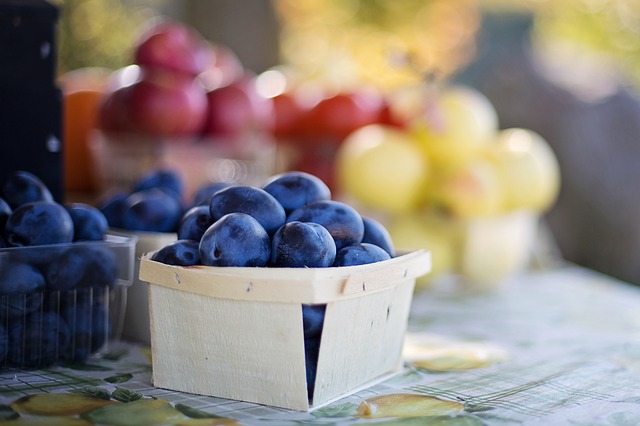By Chef Gerard Viverito
Eating locally and sustainably is easier during the warmer months when farmer’s markets are brimming with fresh produce. While winter presents a few challenges, it is still possible to find clean-eco-friendly foods in your nearby supermarket. Here are a few simple tips.
1. Plan your menu to follow the seasons
Supermarkets sell fruits and vegetables from around the globe, but eating this way increase your carbon footprint. Use a seasonal food guide to learn what’s in season near you then plan your grocery shopping accordingly.
Get creative and try to use ingredients in multiple ways throughout the week. And remember the 50 percent rule: 50 percent of your plate should be vegetables. This will help reduce food waste so your leftovers don’t take up space in landfills.
2. Read the food labels
Whether you support Fair Trade, non-GMO, etc., if you’re reading this, chances are good that you’re already checking out a food’s label before you put it in your shopping cart.
The new food labels are making that easier. In fact, research shows that most supermarket shoppers choose foods based on their ingredients, nutritional value and more recently whether those foods are eco-friendly.
Research by a company called EcoFocus Worldwide found that 94 percent of us think about our health when we food shop, and 87 percent of us are also thinking about the environment. And a growing number of grocery shoppers – 58 percent in 2017 compared with 54 percent in 2014 – care about where companies source their ingredients.
3. Use this hack for recognizing a widely used, sustainable ingredient.
One way to avoid GMO is to look for palm oil instead of corn, soy or canola oils. Palm oil is naturally trans-fat free and non-GMO. It’s in popular products such as Smart Balance. While you may not see the country of origin on the food labels, much of the palm oil in our food supply comes from Malaysia, where it’s certified sustainable.
I’ve walked through the Malaysian oil palm plantations. Malaysians are advancing new standards in environmental protection, especially of rainforests, for the palm oil industry.
4. Ask this question in the seafood department
Ninety-one percent of our seafood is imported. We don’t know how it was caught or what regulations were followed to protect our oceans.
One of the most important questions you can ask at the supermarket or fish market is the country of origin. The American seafood industry generally has better sustainability practices than those of other countries.
5. Learn the secret code for fruits and vegetables
Most people are unaware that the numbered stickers on produce may also indicate if fresh, unprocessed fruits and vegetables are organic or if they were conventionally grown. These are called Price Look Up (PLU) codes.
Not all stores use these codes to differentiate between organic and conventional, so ask your produce department manager. If your supermarket does use PLU codes, a five-digit code beginning in 9 identifies organic, and a four-digit code means conventionally grown.
Just keep in mind that even if produce is labeled Certified Organic, that doesn’t necessarily make it better. There are farmers who are doing a good job with their farm practices, but who can’t afford the certification.
Based on the EcoFocus research, Non-GMO Project Verified has overtaken Certified Organic on shopping lists, as consumers are becoming more aware that soy, corn and other common ingredients are genetically modified.
Pin It:

About the author:
 Chef Gerard Viverito, The Sustainable Chef, is a culinary instructor as the Director of Culinary Education for Passionfish, an NGO non-profit organization dedicated to educating people around the globe on the issue of sustainability in the seas. [www.passionfish.org] He is also the operator of Saveur Fine Catering, a company whose beliefs and products center on local, sustainable and organic foods. Chef Viverito’s pantry is loaded with items commonly overlooked in the supermarkets, yet he has a thorough understanding of them and a passion to teach others how to cook more healthfully.
Chef Gerard Viverito, The Sustainable Chef, is a culinary instructor as the Director of Culinary Education for Passionfish, an NGO non-profit organization dedicated to educating people around the globe on the issue of sustainability in the seas. [www.passionfish.org] He is also the operator of Saveur Fine Catering, a company whose beliefs and products center on local, sustainable and organic foods. Chef Viverito’s pantry is loaded with items commonly overlooked in the supermarkets, yet he has a thorough understanding of them and a passion to teach others how to cook more healthfully.
In addition, Chef Viverito has dedicated a large part of his career to what he terms “functional cooking.” This is where he adds nutritional ingredients to dishes to gain healthful results. He is well known for his ability to lower the glycemic index value of food, add omega fatty acids, and whole proteins to dishes without compromising the texture or taste. He appears regularly on radio and television programs demonstrating this as well as consulting clients on their dietary needs. www.ChefGerard.com



I love shopping farmers markets and freezing/canning my own produce from our garden. It’s so rewarding!